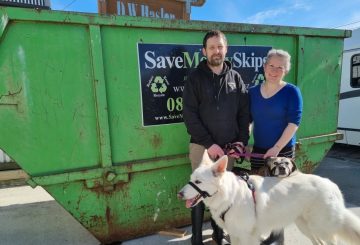Beberapa bisnis Wellington meminta Pemerintah untuk membuat pekerja berhenti bekerja dari rumah, mengikuti jejak Amazon. Mereka percaya ini dapat membantu meningkatkan ekonomi, yang digambarkan sebagai “es” dalam laporan Kiwibank baru-baru ini.
Di Wellington, hampir seperempat tenaga kerja terdiri dari pegawai negeri, dengan 16% lainnya bekerja di pemerintah daerah dan pendidikan. Bisnis ingin pegawai pemerintah kembali ke kantor mereka untuk meningkatkan lalu lintas pejalan kaki dan membantu bisnis yang sedang berjuang.
Sanjay Dayal, yang menjual produk ke restoran lokal, merasa kota ini terlalu sepi. Dia ingat betapa sibuknya Cuba Street dulu dan berencana untuk memindahkan tokonya ke daerah yang lebih sibuk. Dia menunjukkan bahwa bisnis membayar sewa yang lebih tinggi di pusat kota untuk lalu lintas pejalan kaki, yang telah turun secara signifikan karena pekerjaan jarak jauh.
Dayal percaya bahwa jika pekerja pemerintah kembali ke kantor mereka, itu akan menghidupkan kembali kota. Dia melihat hubungan antara jalan-jalan kosong dan penurunan bisnis lokal. Roger Young, pemilik Fidel’s Cafe, setuju, mencatat bahwa restorannya baru-baru ini mengalami minggu paling lambat dalam 25 tahun. Dia ingin pemerintah mendorong pekerja untuk kembali untuk mengangkat suasana kota.
Young menambahkan bahwa kembali ke kantor akan meningkatkan produktivitas dan kesehatan mental, karena bekerja dari rumah dapat menyebabkan isolasi. Rhys Kaan, pemilik Caffeinated Dragons, berpikir memiliki pekerja pemerintah kembali akan membantu, tetapi dia mengakui pemotongan pekerjaan di sektor publik telah merugikan bisnis.
Bisnis lokal lainnya telah beradaptasi dengan pindah ke pinggiran kota, di mana lebih banyak orang bekerja secara langsung. Mia dan Tim Tracey dari Pickle and Pie membuka toko roti di Ngaio alih-alih kota karena pelanggan kota mereka sering berada di rumah.
Presiden Asosiasi Restoran, Mike Egan, menunjukkan bahwa lebih sedikit orang di kantor merusak pendapatan bisnis. Sebuah laporan baru-baru ini mencatat penjualan perhotelan di Wellington turun 5,5% pada awal 2024, sementara penjualan nasional tumbuh.
Sementara ada perdebatan tentang pekerjaan jarak jauh, pengacara ketenagakerjaan Susan Hornsby-Geluk mengatakan memaksa karyawan kembali tergantung pada kontrak mereka. Jika kontrak menyatakan pekerjaan harus dilakukan di kantor, majikan mungkin memerlukan pengembalian. Namun, jika karyawan telah bekerja dari rumah selama bertahun-tahun, mereka mungkin berpendapat bahwa ini telah menjadi praktik yang diterima.




























































